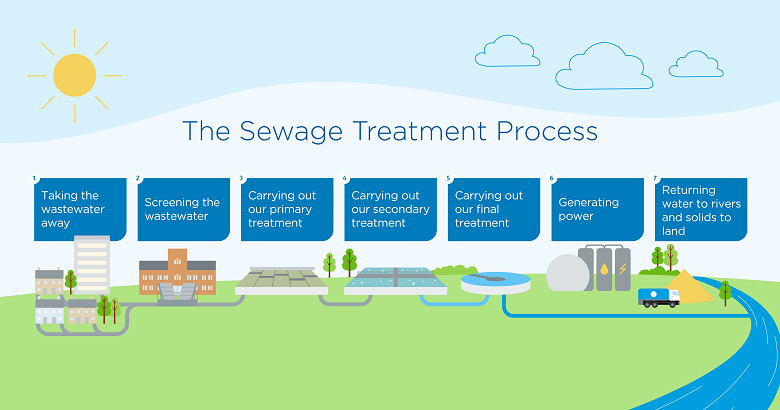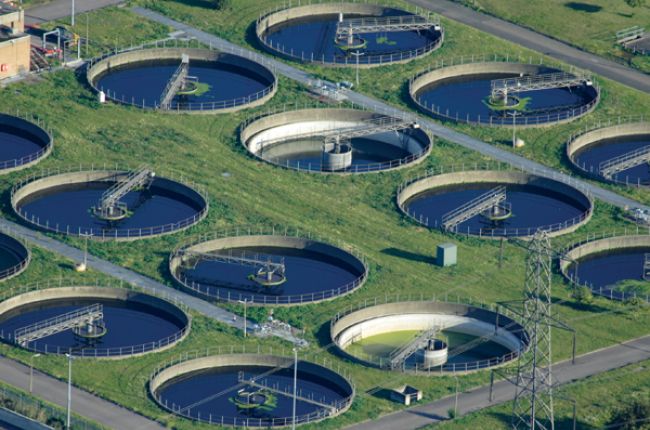Vital Steps in Local Waste Water Treatment Plants
Vital Steps in Local Waste Water Treatment Plants
Blog Article
Strategic Approaches to Improve Drainage Therapy Performance and Reduce Ecological Effect
In the realm of waste water treatment, the mission for improved efficiency and minimized environmental influence is a continuous difficulty that demands critical remedies. The assimilation of sophisticated therapy innovations, energy-efficient processes, source recovery approaches, enhanced nutrient elimination techniques, and smart tracking and control systems represents a diverse framework for dealing with these pushing concerns.
Advanced Therapy Technologies
Sophisticated membrane layer purification systems have actually reinvented advanced wastewater therapy procedures, dramatically boosting the removal of contaminants. This innovation has shown to be extremely reliable in removing a wide variety of contaminants, including drugs, hefty steels, and organic compounds, which are frequently testing to eliminate with traditional therapy approaches.
Additionally, membrane layer filtration systems provide various benefits over conventional therapy techniques. In addition, these systems are extremely functional and can be conveniently integrated into existing treatment plants or used as standalone units for decentralized applications.
Energy-Efficient Processes
The combination of energy-efficient processes in wastewater treatment systems is crucial for maximizing source application and reducing operational costs. One vital approach to boosting power performance in wastewater therapy is the usage of sophisticated oygenation systems, such as fine bubble diffusers or surface aerators, which can boost oxygen transfer efficiency and decrease energy consumption.
Additionally, maximizing process control and automation through making use of advanced sensing units and keeping track of systems can improve total power efficiency by changing operations in real-time based on actual need and problems. Implementing power audits and frequently checking power efficiency signs are crucial methods to determine areas for renovation and track energy-saving efforts successfully. On the whole, the fostering of energy-efficient procedures in wastewater treatment not only profits the environment however likewise contributes to long-lasting price financial savings and operational sustainability.
Source Healing Strategies
With a concentrate on optimizing resource usage and sustainability in wastewater therapy systems, the application of source recovery approaches becomes a crucial aspect in enhancing functional effectiveness. Resource recovery techniques in wastewater therapy include the recognition and removal of beneficial resources from the waste stream, thereby transforming what was when considered waste right into a useful possession. By applying source recuperation techniques such as nutrient removal and recuperation, power generation from raw material, and the manufacturing of reusable water, wastewater therapy plants can decrease environmental impact while optimizing performance.

Enhanced Nutrient Removal Methods
Implementing advanced nutrient removal strategies is important for optimizing the performance of wastewater therapy systems. Improved nutrient removal plays an important duty in decreasing the ecological effect of treated effluent released right into water bodies. Among the essential techniques utilized for enhanced nutrient removal is the process of biological nutrient removal (BNR), which entails the elimination of nitrogen and phosphorus via organic processes. This can be achieved with the usage of specialized bacteria that can convert nitrogen substances into inert get redirected here nitrogen gas through denitrification, and accumulate phosphorus within their cells through a procedure called enhanced biological phosphorus elimination (EBPR)

Along with BNR, advanced therapy methods such as membrane layer bioreactors (MBRs) and constructed wetlands can also be employed to boost nutrient removal efficiency. MBRs use membrane layers to accomplish high-quality effluent requirements by properly getting rid of nutrients and put on hold solids. Constructed wetlands simulate natural marsh processes to get rid of nutrients through plant uptake, microbial task, and sedimentation. By including these innovative nutrient removal strategies right into wastewater therapy systems, sectors and towns can successfully decrease nutrient air pollution and protect the setting.
Smart Monitoring and Control Solution
Using sophisticated innovation, the integration of smart monitoring and control systems transforms the operational performance of wastewater therapy facilities. These systems incorporate innovative sensors and data analytics to continuously keep an eye on key parameters such as pH levels, turbidity, liquified oxygen, and flow prices in real-time. By gathering and examining this information, operators can gain valuable understandings right into the efficiency of the therapy processes, allowing proactive changes to maximize treatment efficiency.
Smart surveillance and control systems additionally support remote tracking abilities, enabling operators to access real-time information and control functions from off-site locations. This remote availability enhances functional adaptability and responsiveness, allowing speedy interventions in instance of system breakdowns or fluctuations in influent high quality. In addition, the predictive maintenance capabilities of these systems aid avoid devices failings and decrease downtime, ultimately enhancing the overall integrity of wastewater therapy operations (Waste Water Treatment).
Verdict
To conclude, calculated methods such as innovative therapy innovations, energy-efficient processes, source recuperation methods, improved nutrient removal strategies, and smart monitoring and control systems play an essential role in enhancing wastewater treatment efficiency and reducing environmental Visit Website effect. By carrying out these techniques, wastewater treatment plants can improve their overall performance, minimize power intake, recoup beneficial sources, and guarantee conformity with environmental policies. These strategies are vital for sustainable and effective wastewater management methods.

In final thought, critical methods such as advanced therapy innovations, energy-efficient procedures, resource recovery techniques, enhanced nutrient elimination techniques, and clever tracking and control systems play a vital duty in enhancing wastewater therapy performance and lessening ecological effect.
Report this page